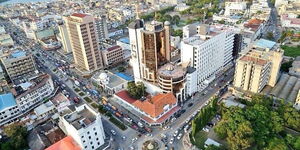A new report from the China Africa Research Initiative (CARI) has cast more doubt on the relationship between the Standard Gauge Railway (SGR) debt and the Mombasa Port.
The report titled How Africa Borrows From China: And Why Mombasa Port is Not Collateral for Kenya's Standard Gauge Railway released on Thursday, April 14, differed with the Office of the Auditor General (OAG)'s statement that the port had been used as collateral in the repayment of the SGR loan.
Instead, the report, which was created by the Johns Hopkins University School of Advanced International Studies indicated that the port was SGR's major customer.
The port, which is managed by Kenya Ports Authority (KPA), was to ensure that a certain level of cargo transported on SGR is maintained.
"Instead of serving as collateral or security for the loans, the profitable Mombasa Port was linked into the SGR project as its major customer. The port’s only role was to help Kenya Port Authority (KPA), its owner, ensure that a set level of cargo would be transported between Mombasa and Kenya’s inland capital of Nairobi.
"If cargo levels dropped below that level, KPA agreed to draw on its own revenues to make up the difference. Repayment of the SGR loan will largely come from Kenya’s Railway Development Levy (RDL), a tax on all imports into the country," read the report in part.
The report was a response to a 2018 report where the OAG indicated that Mombasa Port risked seizure if Kenya defaulted on the SGR loan repayments.
The OAG had further indicated that KPA had waived the port’s sovereign immunity to use it as security for the loan.
Soon after, President Uhuru Kenyatta rubbished the claims as pure propaganda in a statement that has since been published by the Embassy of the People's Republic of China in the Republic of Kenya.
At the time, Uhuru also argued that Kenya was ahead in the loan's repayment programme - noting that there was no cause for alarm.
"I am confident that Kenya's debt is for infrastructure development that will not only benefit the current generation but future generations too," he explained at the time.
The CARI report also showed that the Kenyan Auditor General had misunderstood how the waiver of the sovereign immunity clause worked.
Instead, the sovereign immunity only served as a dispute resolution feature that allowed contracts to be solved in an international venue and not that the country had put its assets on the line.
The country borrowed a total of Ksh577 billion (USD5.08 billion) in 2014 and 2015 from China for the construction of the SGR line.












